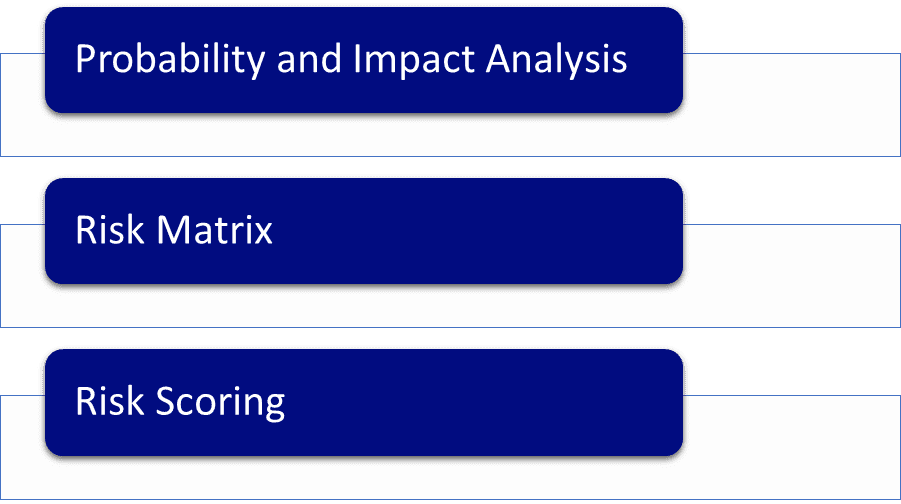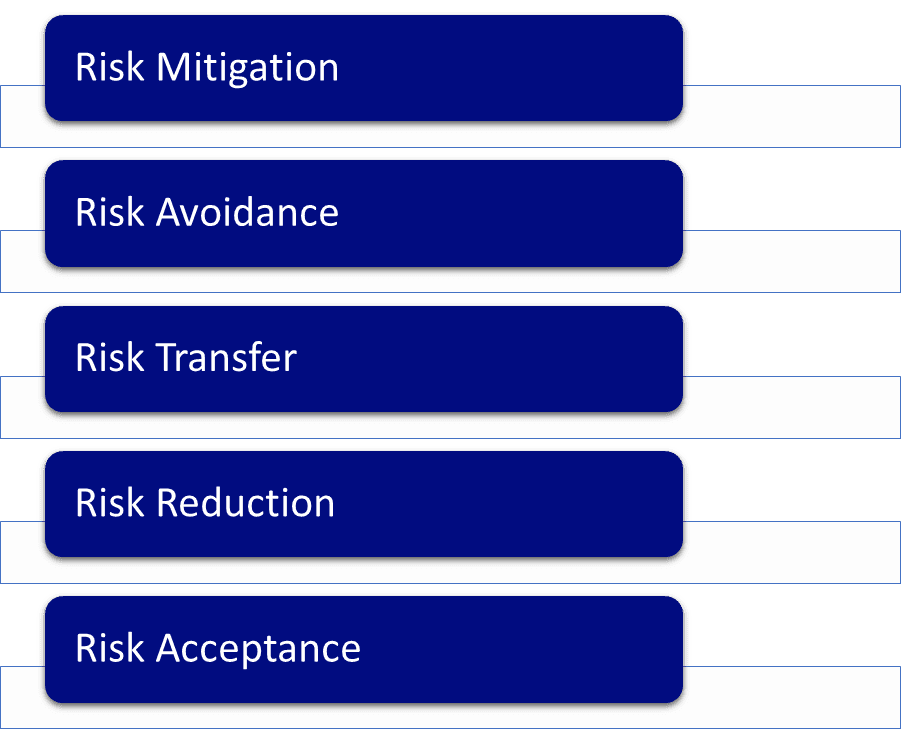What They Are and Why They Matter
Risk Management Techniques are the process of identifying, assessing, and mitigating risks to an organisation. It is a critical function that is necessary to ensure the long-term success and sustainability of a business. Effective Risk Management Techniques allow businesses to proactively identify and manage potential threats and opportunities, thereby reducing the likelihood of financial losses and improving business performance.
Common types of business risks include strategic risks (such as changes in the market or competitive landscape), operational risks (such as process failures or supply chain disruptions), financial risks (such as interest rate fluctuations or credit risk), and compliance risks (such as legal and regulatory violations).
Failure to properly manage these risks can result in significant financial losses, reputational damage, and even legal or regulatory penalties. Therefore, it is essential for businesses to prioritise risk management and develop comprehensive risk management strategies.
Risk Identification Techniques: How to Identify Risks in Your Business
Risk identification is the first step in the risk management process. It involves identifying all potential risks that could impact the business, including internal and external factors. There are several techniques that businesses can use to identify risks, such as brainstorming, SWOT analysis, and risk assessments.

- Brainstorming is a group technique that encourages the free flow of ideas and promotes creative thinking. It involves a group of stakeholders coming together to identify potential risks based on their experience and knowledge of the business.
- SWOT analysis is a structured approach that involves assessing the business’s strengths, weaknesses, opportunities, and thr
eats. By analysing these factors, businesses can identify potential risks that could impact their operations. - Risk assessments involve a systematic evaluation of the business’s processes, systems, and controls to identify potential risks. This technique is particularly useful in identifying operational and compliance risks.
It is important to involve all relevant stakeholders in the risk identification process, including employees, management, customers, and suppliers. This ensures that all potential risks are identified and that the risk management strategy is comprehensive and effective.
At The Risk Station, we offer tailored solutions for various industries and sub-industries that contain more than 50 key risk descriptions. These solutions can help businesses identify potential risks specific to their industry and develop a risk management plan that is tailored to their needs. Our risk identification techniques are designed to provide businesses with a comprehensive understanding of the risks they face, enabling them to take proactive measures to mitigate these risks. To learn more about our solutions, please check out our shop.
Risk Analysis Techniques: How to Evaluate and Prioritise Risks
Risk analysis involves evaluating and prioritising risks based on their likelihood and impact. There are several techniques that businesses can use to analyse risks, such as probability and impact analysis, risk matrix, and risk scoring.

- Probability and impact analysis involves assessing the likelihood and potential impact of each identified risk. By considering both factors, businesses can prioritise risks based on their level of risk exposure.
- A risk matrix is a visual tool that categorises risks based on their likelihood and impact. By using a risk matrix, businesses can easily identify high-priority risks that require immediate attention.
- Risk scoring involves assigning a score to each identified risk based on their likelihood and impact. This technique is particularly useful in identifying and prioritising complex risks.
It is important to consider both the likelihood and impact of risks when prioritising them. By doing so, businesses can focus their resources on high-priority risks and develop effective risk mitigation strategies.
At The Risk Station, we offer a Risk Register tool that can assist businesses in evaluating and prioritising risks. Our tool contains formulas to assess the probability and impact of the risks, as per a tailorable risk matrix that provides inherent risk scoring. The Risk Register tool enables businesses to track and manage their identified risks, providing a clear overview of the risks they face and their likelihood and impact. By using our tool, businesses can prioritise their risks based on their level of risk exposure and develop effective mitigation strategies that address the most critical risks. The Risk Register tool also enables businesses to regularly review and update their risk management plan, ensuring that their strategies remain effective and relevant over time.
Risk Mitigation Techniques: How to Reduce or Eliminate Risks

- Risk mitigation involves developing strategies to reduce or eliminate potential risks. There are several techniques that businesses can use to mitigate risks, such as risk avoidance, risk transfer, risk reduction, and risk acceptance.
- Risk avoidance involves eliminating the risk altogether. This technique is particularly useful for high-risk situations where the potential impact of the risk is significant.
- Risk transfer involves transferring the risk to a third party, such as an insurance company. This technique is commonly used for financial risks, such as credit risk.
- Risk reduction involves implementing controls to reduce the likelihood or impact of the risk. This technique is particularly useful for operational and compliance risks.
- Risk acceptance involves accepting the risk and its potential impact. This technique is commonly used for low-risk situations where the cost of mitigating the risk outweighs the potential impact.
It is important to select the most appropriate risk mitigation technique based on the nature and severity of the risk. For example, high-risk situations may require a combination of risk avoidance and risk reduction strategies, while low-risk situations may only require risk acceptance.
Risk Mitigation Technique Implementation
When implementing risk mitigation strategies, it is also important to regularly monitor and review their effectiveness. This allows businesses to make any necessary adjustments and ensure that the risk management plan remains up-to-date and effective.
We understand the importance of having a comprehensive and effective risk management policy in place. That’s why we offer a template of a Risk Management Policy template that can be tailored to the specific needs and requirements of your business. Our policy template includes key components such as risk identification and analysis procedures, risk mitigation strategies, and a framework for ongoing monitoring and review. By using our template, businesses can ensure that their risk management policy is thorough and effective in mitigating potential risks.
Risk Monitoring and Review Techniques: How to Monitor and Review Risks over Time
Risk monitoring and review involves regularly assessing the effectiveness of the risk management plan and making any necessary adjustments. There are several techniques that businesses can use to monitor and review risks, such as risk registers, risk reports, and risk audits.

- Risk registers are a document that tracks all identified risks, their likelihood and impact, and the status of any mitigation strategies. By using a risk register, businesses can easily monitor and track the progress of their risk management plan.
- Risk reports provide a summary of the identified risks, their likelihood and impact, and the status of any mitigation strategies. By providing regular risk reports to stakeholders, businesses can ensure that everyone is aware of potential risks and the progress of the risk management plan.
- Risk audits involve a systematic review of the risk management plan to assess its effectiveness. This technique is particularly useful in identifying any gaps or weaknesses in the risk management plan and making any necessary adjustments.
Regular reviews
Regularly monitoring and reviewing Risk Management Techniques is essential to ensuring its effectiveness. By doing so, businesses can make any necessary adjustments and ensure that they are proactively managing potential risks.
At The Risk Station, we offer a range of tools and templates that can be tailored to the specific needs of your business. Check out our shop for a variety of resources that can assist in the risk monitoring and review process, including risk assessment templates, risk register templates, and risk management policy templates. By utilizing these tools and templates, businesses can streamline their risk management process and ensure that their risk management plan remains up-to-date and effective.
Effective risk management is critical to the long-term success and sustainability of a business. To implement effective risk management strategies, businesses should:
- Prioritise risk management: Make risk management a priority by dedicating sufficient resources and developing a comprehensive risk management plan.
- Involve all relevant stakeholders: Involve all relevant stakeholders in the risk management process to ensure that all potential risks are identified and the risk management plan is comprehensive and effective.
- Use a variety of risk management techniques: Use a variety of risk management techniques, such as risk identification, risk analysis, risk mitigation, and risk monitoring and review, to develop a comprehensive risk management plan.
- Regularly monitor and review the risk management plan: Regularly assess the effectiveness of the risk management plan and make any necessary adjustments to ensure its effectiveness.
By following these Risk Management Techniques best practices, businesses can proactively identify and manage potential risks and improve their long-term success and sustainability.





